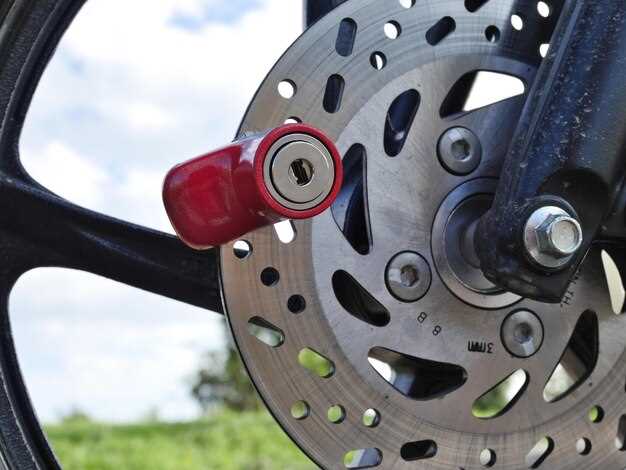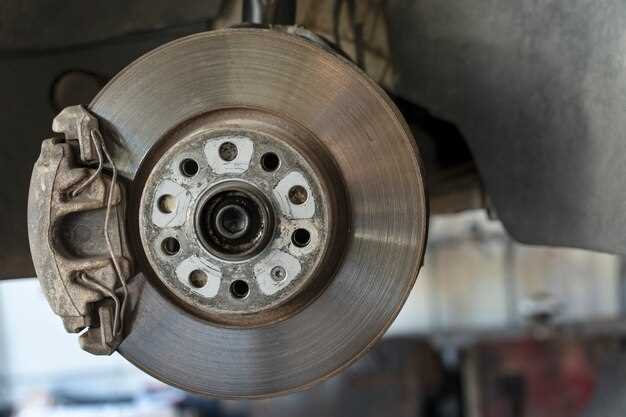
When it comes to enhancing the performance of your vehicle, few components are as critical as the brakes. Quality brake pads play a pivotal role in ensuring you achieve optimal braking efficiency, whether navigating the twists and turns of a racetrack or cruising through city streets. Choosing the right set of brake pads can significantly impact both safety and driving experience.
For automotive enthusiasts looking to balance everyday usability with high-performance capabilities, selecting the best brake pads becomes essential. The right pad will provide consistent stopping power, excellent heat dissipation, and low fade characteristics under rigorous conditions. This is particularly important on the track, where brake performance can literally make the difference between gaining a position or losing valuable seconds.
This guide will explore the top brake pads available on the market designed specifically for street and track performance. We will examine the materials, design features, and how each option can meet the demands of both daily drives and high-speed situations. With the right information, you can make an informed decision that enhances your vehicle’s braking performance to its fullest potential.
Choosing the Right Material for Your Driving Style

Selecting the ideal brake pads is crucial for achieving optimal performance, both on the street and the track. The brake pad material significantly influences the effectiveness, longevity, and overall driving experience. Understanding the different types of materials available can help you make a more informed decision based on your specific driving style.
Here are the primary brake pad materials and their characteristics:
- Organic (Non-Asbestos Organic – NAO):
- Made from materials like rubber, resin, and fiber.
- Typically quiet and produce less dust.
- Ideal for everyday street driving and low-performance vehicles.
- Less effective at high temperatures compared to other materials.
- Metallic (Semi-Metallic):
- Composed of metal fibers mixed with other materials.
- Offer superior heat dissipation and fade resistance.
- Excellent for spirited driving and occasional track use.
- Can be noisy and produce more dust than organic pads.
- Ceramic:
- Made from a blend of ceramic fibers and non-ferrous materials.
- Provide consistent braking performance and are quieter.
- Produce less dust and are suitable for everyday driving.
- Not recommended for intense track conditions.
- Race Pads:
- Specifically designed for high-performance applications.
- Made from specialized compounds that excel under extreme heat.
- Provide maximum stopping power but can wear out quickly on the street.
- Best suited for dedicated track vehicles.
To select the best brake pad material for your driving style, consider the following factors:
- Driving Environment:
- Daily commuting on the street vs. track days.
- Weather conditions and road surface can affect performance.
- Performance Needs:
- Casual driving requires different characteristics than aggressive cornering.
- High-speed stability and resistance to fade are crucial for track use.
- Noise and Dust Levels:
- Some materials produce more dust and noise; consider your tolerance.
- Choose a pad that complements your noise and cleanly issues preferences.
By evaluating your driving style and the specific requirements for your vehicle, you can select the right brake pads that will enhance performance and provide a safer driving experience.
Key Features of High-Performance Brake Pads
High-performance brake pads are designed to enhance both street and track performance, ensuring optimal braking capabilities under various conditions. One of the primary features is their ability to provide superior stopping power. This is achieved through specialized materials that maintain effectiveness at high temperatures, reducing the risk of brake fade during intensive driving.
The composition of these pads often includes advanced formulations, such as semi-metallic or ceramic compounds, which offer improved friction characteristics. These materials enhance the grip between the brake pads and rotors, leading to shorter stopping distances and better overall performance.
Durability is another critical aspect of high-performance brake pads. They are engineered to withstand extreme usage, providing longevity even under rigorous driving scenarios. This resilience ensures that the pads maintain their performance thresholds over time, reducing the frequency of replacements.
Noise and dust generation are also significant considerations. Many high-performance pads are designed to minimize squeaking and reduce brake dust, which can contribute to cleaner wheels and a quieter driving experience. Manufacturers often incorporate sound-dampening technologies to further enhance user comfort.
Compatibility with various brake systems is essential. High-performance brake pads are versatile and can be tailored to fit a range of vehicles, from everyday street cars to racing setups, ensuring that enthusiasts can upgrade their brakes to meet specific driving needs.
Additionally, the thermal management properties of these pads play a vital role in maintaining performance. High-performance brake pads can dissipate heat efficiently, allowing for consistent braking performance even during extended periods of high activity. This feature is crucial for track use where demand on the brakes is consistently high.
Understanding Heat Management in Brake Pads
Effective heat management in brake pads is crucial for optimal performance, especially during high-stress situations such as track racing or aggressive street driving. As brakes are applied, friction generates heat, which can significantly affect the efficiency and longevity of the brake pads. Therefore, understanding how heat impacts brake performance is essential.
Brake pads are designed with materials that can withstand and dissipate heat. High-quality pads typically feature compounds that resist fading, a condition where decreased performance occurs due to excessive heat. Brake fade can lead to longer stopping distances and reduced control, which is particularly dangerous on the street or track.
Modern brake pads often incorporate metallic, ceramic, or organic materials, each with distinct thermal properties. Metallic pads, for instance, can endure high temperatures and provide consistent performance but may wear down brake rotors faster. On the other hand, ceramic pads offer quieter operation and produce less dust but may not handle extreme heat as well as their metallic counterparts.
Heat dissipation also plays a critical role in maintaining brake effectiveness. Many high-performance brake systems use vented rotors designed to enhance airflow, helping to cool the pads quickly. Additionally, proper bedding of brake pads is vital for establishing an optimal heat transfer coefficient, ensuring efficient operation during repeated use.
Overall, effective heat management in brake pads is paramount for achieving reliable braking performance. When selecting brake pads for street or track use, it’s essential to consider their heat tolerance to avoid performance degradation under demanding conditions.
Comparing Street vs. Track Brake Pad Options
When choosing brake pads, understanding the differences between street and track options is crucial for optimizing performance. Street brake pads are designed for everyday use, focusing on a balance between effectiveness, noise reduction, and longevity. These pads often use softer materials that provide good initial bite and modulation at lower temperatures, making them suitable for typical driving conditions.
In contrast, track brake pads are engineered for high-performance applications, where extreme conditions demand superior stopping power. They generally utilize harder compounds capable of withstanding higher temperatures without fading. This allows for consistent braking performance even during prolonged, aggressive use on the track.
Another significant difference lies in the wear characteristics. Street pads typically exhibit lower wear rates over time, ensuring longer service intervals. However, track pads may wear faster under similar conditions due to their composition prioritizing performance over longevity. The choice of application will greatly influence the longevity and performance you can expect from your brakes.
In terms of response, street pads offer a more forgiving feel, ideal for daily driving where sudden stops are less frequent. Track pads, however, are built for immediate response and bite, allowing drivers to achieve optimal braking performance during competitive racing scenarios.
Ultimately, the decision between street and track brake pads should align with your driving needs and the environments in which you operate your vehicle. While street pads excel in comfort and versatility, track pads deliver the heightened performance necessary for racing applications. Understanding these distinctions will ensure you select the right brake components for your specific driving style and requirements.
Installation Tips for Optimal Performance
Proper installation of brake pads is crucial for achieving optimal performance on both the street and the track. Follow these guidelines to ensure your brake system operates at its best.
First, always begin with a clean workspace. Dirt and debris can affect the installation process and ultimately compromise brake performance. Use proper tools to remove old pads and ensure that the caliper and rotor surfaces are clean.
Second, inspect components carefully. Check the brake rotors for any signs of wear or deformation. If the rotors are in poor condition, they may need to be resurfaced or replaced to allow new brake pads to function effectively.
When installing new brake pads, apply a thin layer of anti-squeal lubricant to the back of each pad. This helps reduce noise and promotes smoother operation. However, avoid using excess lubricant, which can attract dirt.
During installation, ensure that the pads are positioned correctly within the caliper. Misalignment can lead to uneven wear and diminished performance. It’s recommended to follow the manufacturer’s instructions specific to the brake pads being installed.
After installation, it is essential to bed in the brake pads properly. This involves gradually increasing braking pressure during the first few miles of driving to allow the pads to conform to the rotor surface. Proper bedding enhances friction and improves braking efficiency.
Lastly, always double-check your work. Ensure that all components are fastened securely and that there are no unusual sounds during the first brake application. Regular maintenance checks following installation will further support lasting performance.
| Step | Tip |
|---|---|
| 1 | Clean workspace and components |
| 2 | Inspect rotors for wear |
| 3 | Apply anti-squeal lubricant |
| 4 | Check alignment in caliper |
| 5 | Bed in the brake pads |
| 6 | Double-check all connections |
Maintaining Brake Pads for Longevity and Reliability

To ensure optimal performance and lifespan of brake pads, regular maintenance is essential. Proper care not only enhances the effectiveness of your brakes but also contributes to your overall safety on the road or track.
First, conduct regular inspections of the brake pads for signs of wear. Checking the thickness of the pads can help you determine when it’s time for replacement. If the pads appear to be worn down to 3mm or less, they should be replaced immediately to ensure proper braking performance.
Additionally, it is vital to keep the brake system clean. Dust and debris can accumulate on the brakes, leading to reduced effectiveness and increased wear on the pads. Cleaning the calipers and rotors can help maintain the efficiency of the entire braking system.
Using high-quality brake fluids and keeping them at the recommended levels is also crucial. Contaminated or low brake fluid can greatly affect the performance of your brake pads, leading to premature wear and potential failure.
Lastly, consider the type of driving you engage in; aggressive driving styles can lead to faster wear on brake pads. For both street and track enthusiasts, opting for performance-oriented pads designed to handle extreme conditions can enhance durability and reliability.













